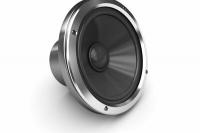How are mussels made?
Mussels are one of the most well-known creatures in the sea. But the molluscs are also at home in rivers and lakes. Do you know how mussels are formed and how they reproduce?

You can find mussels on (almost) every coast. They are used by people today as they were in the past as a source of food, but also as jewelry. Worldwide there are around 25,000 types of mussels - ranging in size from a few millimeters to specimens that can grow up to two meters in size.
The reproduction of clams
- As a rule, mussels are mutually exclusive animals. That is, there are male and female specimens. The female mussels house the eggs and the male the sperm.
- However, reproduction takes place differently than in mammals. In spring and / or summer, the animals are encouraged by chemical signals to excrete the sperm cells and the egg cells via a proboscis at the same time.
- The ocean currents bring them together and melt them together. This creates countless small larvae.
- In the further course, the larvae form into young mussels, settle on the sea floor and continue to grow there.
- In the river mussels, the young mussels are created in a different way. The larvae attach themselves to the gills of fish and become parasites there. The fish then forms a cyst around the clam. This breaks up after a few months; the juvenile mussel falls to the river floor and anchors itself there.
Identify mussels
Everyone has probably collected mussels in their lifetime. But only a few ...
How the calcareous shells of the mussels are made
- You can see from the mussel shells how the individual growth bands develop year after year. These resemble the annual rings of trees. This makes it easy to determine the age of mussels.
- The material of the shell is mainly lime, which the mollusc cemented with an organic substance - the conchyn.
- The clam shell consists of three layers that arise at the same time. The outer layer is called the periostracum. Underneath is the prism layer and inside the animal has the mother-of-pearl layer.
- The shells are produced by a fold of skin on the surface of the soft body, which is known as the coat.
How helpful do you find this article?

